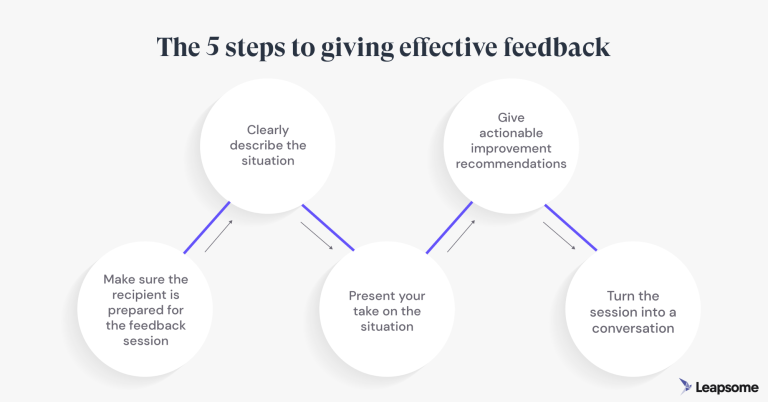How to Coach Public Speaking?
To coach public speaking, focus on practicing techniques and providing constructive feedback. A well-rounded Public speaking is a crucial skill that can greatly impact an individual’s personal and professional life.
Whether you are a teacher, a business professional, or someone who simply wants to improve your communication skills, coaching public speaking can be a valuable endeavor. Effective coaching involves helping individuals overcome their fears, developing their confidence, and honing their presentation skills.
By providing practical tips, creating a supportive environment, and offering constructive feedback, you can empower individuals to become confident and articulate speakers. We will explore some key strategies and techniques for coaching public speaking, enabling you to help others unlock their potential on the stage.
Understanding Public Speaking Fundamentals
Gain a strong foundation in public speaking coaching with a focus on understanding fundamental techniques. Enhance your skills with practical strategies and tips for effective communication in various settings.
Effective communication is crucial in various aspects of life, and public speaking is no exception. Whether you’re coaching others or improving your own skills, understanding the fundamentals of public speaking is essential. In this section, we will explore the importance of effective communication, identify common fears and challenges, and delve into developing confidence and presence.
Importance Of Effective Communication
- Clear communication skills are vital in conveying your message to an audience.
- Engaging your audience through effective communication builds trust and connection.
- Presenting ideas confidently helps you influence others and drive your desired outcome.
- Effective communication skills enhance your personal and professional relationships.
Identifying Common Fears And Challenges
- Fear of speaking in public is a common challenge many individuals face.
- Nervousness and anxiety can hinder one’s ability to communicate effectively.
- Lack of confidence can lead to hesitations and difficulty in conveying one’s message.
- Overcoming stage fright and fear of judgment are key objectives in public speaking coaching.
Developing Confidence And Presence
- Building self-confidence is crucial for effective public speaking.
- Techniques such as proper breathing, body language, and vocal projection contribute to confident delivery.
- Enhancing presence involves capturing the audience’s attention and maintaining engagement.
- Developing a dynamic and authentic speaking style enhances overall presence.
Understanding the fundamental aspects of public speaking sets a strong foundation for coaching others or improving your own skills. By emphasizing the importance of effective communication, identifying common fears and challenges, and focusing on developing confidence and presence, you can empower individuals to become effective and engaging public speakers.
Creating A Coaching Framework
Learn how to coach public speaking effectively by creating a robust coaching framework. Gain insights and strategies to help speakers improve their skills and build confidence in front of an audience.
Public speaking is a skill that can be mastered with the right coaching framework in place. By setting clear goals and objectives, assessing speaking strengths and weaknesses, and designing personalized coaching plans, aspiring speakers can boost their confidence and deliver impactful presentations.
Let’s dive into each of these steps to create an effective coaching framework.
Setting Clear Goals And Objectives:
- Start by understanding the speaker’s objectives: Identifying the purpose of the speaking engagements, whether it’s to inform, persuade, or entertain, will guide the coaching process.
- Define measurable goals: Collaborate with the speaker to set specific, achievable goals that can be tracked and assessed throughout the coaching journey.
- Consider the target audience: Tailor the coaching framework to align with the speaker’s intended audience, taking into account their interests, knowledge level, and expectations.
- Establish a timeline: Break down the coaching process into manageable milestones, creating a structured timeline to track progress and keep the speaker on track.
Assessing Speaking Strengths And Weaknesses:
- Conduct a comprehensive evaluation: Analyze the speaker’s current speaking skills, identifying strengths such as clarity, engagement, or storytelling ability, as well as areas that need improvement, like vocal variety, body language, or organization.
- Utilize feedback mechanisms: Collect feedback through video recordings, in-person practice sessions, or audience surveys to gain valuable insights into the speaker’s delivery and its impact.
- Highlight areas for growth: Identify specific weaknesses and discuss them with the speaker, emphasizing the importance of continuous improvement while providing constructive feedback.
Designing Personalized Coaching Plans:
- Create a customized strategy: Tailor the coaching plans to address the speaker’s individual needs and goals, focusing on the identified areas for improvement.
- Prioritize practice and repetition: Incorporate regular practice sessions to hone speaking skills, ensuring that the speaker has ample opportunities to refine their techniques and gain confidence.
- Utilize diverse coaching techniques: Employ a variety of exercises, such as impromptu speeches, role-playing, or vocal warm-ups, to enhance different aspects of the speaker’s performance.
- Provide ongoing support and guidance: Be readily available for feedback, guidance, and encouragement, fostering a supportive environment that nurtures the speaker’s growth.
By following this coaching framework, speakers can develop their public speaking abilities, gain confidence, and captivate audiences. Remember, the key lies in setting clear goals, assessing strengths and weaknesses, and designing personalized coaching plans. With consistent practice and guidance, even the most apprehensive speakers can become confident and impactful presenters.
Developing Core Speaking Skills
Coaching public speaking involves developing core speaking skills to effectively communicate and engage with an audience. This process focuses on honing techniques, such as body language, vocal variation, and storytelling, to deliver impactful presentations and speeches.
Public speaking is a valuable skill that can be developed through focused coaching and practice. By honing core speaking skills, individuals can become more confident and effective communicators. Here are three essential areas to focus on when coaching public speaking:
Enhancing Vocal Projection And Articulation:
- Utilize breath support to project your voice: By taking deep breaths from your diaphragm, you can produce a stronger and more resonant voice.
- Practice proper enunciation: Pay attention to the clarity of your speech by articulating each word distinctly and avoiding mumbling.
- Use vocal variety: Vary your pitch, pace, and volume to add interest and emphasis to your delivery.
- Incorporate pauses strategically: Pause before important points or to add impact to a punchline, allowing your audience to absorb your message effectively.
Utilizing Body Language And Nonverbal Communication:
- Maintain good posture: Stand tall with your shoulders back and head held high, projecting confidence and professionalism.
- Establish eye contact: Engage with your audience by looking directly at individuals for brief moments, creating a connection and conveying credibility.
- Use gestures purposefully: Employ appropriate hand movements to emphasize key points or to illustrate concepts, making your speech more captivating.
- Utilize facial expressions: Show enthusiasm, concern, or excitement through your facial expressions, enhancing your message’s emotional impact.
Refining Storytelling And Narrative Techniques:
- Craft a captivating opening: Begin with a compelling story, anecdote, or surprising fact that grabs your audience’s attention and establishes a context for your speech.
- Structure your speech effectively: Organize your content in a logical manner, with a clear introduction, body, and conclusion, making it easier for your audience to follow along.
- Use vivid language and imagery: Incorporate descriptive words and sensory details to create engaging visuals in your audience’s minds, making your stories more memorable.
- Emphasize emotional appeal: Connect with your audience on an emotional level by sharing personal experiences or relatable stories that evoke empathy or inspire action.
By focusing on enhancing vocal projection and articulation, utilizing body language and nonverbal communication, and refining storytelling and narrative techniques, aspiring public speakers can develop strong and engaging communication skills. With practice and coaching, individuals can effectively convey their message, engage their audience, and become confident public speakers.
Overcoming Anxiety And Nervousness
Learn how to coach public speaking effectively by helping individuals overcome anxiety and nervousness. Discover techniques to build confidence, manage stress, and deliver impactful speeches. Gain valuable insights on creating a positive and supportive environment for public speaking success.
Coaching Strategies For Managing Public Speaking Anxiety:
Public speaking anxiety can be a common and intimidating challenge for many individuals. However, with the right coaching strategies, it is possible to overcome anxiety and nervousness and become a confident public speaker. Here are some effective techniques to help manage public speaking anxiety:
- Breathing exercises and relaxation techniques:
- Deep breathing: Inhale deeply through your nose, hold for a few seconds, and exhale slowly through your mouth. Repeat this several times to calm your nerves and relax your body.
- Progressive muscle relaxation: Starting from your toes, tense and then release each muscle group in your body. This promotes physical relaxation and reduces tension.
- Guided imagery: Close your eyes and visualize yourself delivering a successful speech or presentation. Imagine feeling confident, composed, and engaging with your audience. This technique helps to alleviate anxiety and builds self-assurance.
- Visualization and positive self-talk:
- Visualize success: Before the speaking engagement, visualize yourself delivering a flawless speech and receiving positive feedback from the audience. This mental rehearsal boosts confidence and reduces anxiety.
- Positive affirmations: Replace negative self-talk with positive affirmations. Repeat statements such as “I am a capable speaker” or “I have valuable insights to share” to reinforce self-confidence and overcome self-doubt.
- Mindset and preparation:
- Identify and challenge negative thoughts: Recognize any negative thoughts or beliefs associated with public speaking and challenge their validity. Replace them with positive and realistic thoughts.
- Practice makes perfect: Rehearse your speech or presentation multiple times to build familiarity with the content. Confidently delivering your message will help alleviate anxiety.
- Focus on the audience: Shift your mindset from self-centered thoughts to focusing on the needs and interests of your audience. This redirection of attention helps to reduce self-consciousness and anxiety.
Remember, overcoming public speaking anxiety takes time and practice. By employing these strategies, you can gradually build confidence and become a skilled and effective public speaker.
Effective Presentation Structure And Organization
Learn how to coach public speaking effectively with a well-structured and organized presentation. Discover practical tips and techniques to enhance your speaking skills and engage your audience.
Crafting Compelling Openings And Closings
Crafting compelling openings and closings is crucial to capture your audience’s attention and leave a lasting impression. Here are some key strategies to create impactful beginnings and endings:
- Start with a captivating hook: Begin your presentation with a powerful statement, thought-provoking question, or a surprising statistic to grab the audience’s attention from the start.
- Clearly state the purpose: Within the opening, clearly articulate the purpose or main idea of your presentation. This will set the tone and provide a preview of what the audience can expect.
- Establish credibility: Share relevant credentials or experiences early on to establish your credibility as a speaker and gain the audience’s trust.
- Tell a compelling story: Engage your audience through storytelling. Use anecdotes, personal experiences, or case studies to make your content relatable and memorable.
- Include a call to action: End your presentation with a strong call to action. Encourage your audience to take specific steps, such as signing up for a newsletter, trying out a product, or implementing the ideas you presented.
Structuring Content For Maximum Impact
Structuring your presentation content in a logical and organized manner is key to delivering a persuasive speech. Follow these guidelines to maximize impact:
- Create an outline: Before diving into content creation, outline the main topics and subtopics you want to cover. This will help you stay focused and ensure a smooth flow of information.
- Use a clear structure: Divide your presentation into sections, each with a clear focus. Use headings, subheadings, and transitions to guide your audience through different parts of your speech.
- Provide a roadmap: At the beginning, briefly outline the structure of your presentation to provide a roadmap for your audience. Let them know what topics you’ll cover and in what order.
- Prioritize key points: Identify the most important information you want to convey and prioritize it accordingly. Start with your strongest points to capture attention and ensure they are remembered.
- Use transitions: Smoothly transition between different points and sections to create a cohesive flow. Transitions can include phrases like “moving on to the next point” or “now let’s explore…”
- Reiterate main ideas: Summarize key points and ideas throughout your presentation to reinforce understanding and retention.
Incorporating Effective Visuals And Multimedia
Enhancing your presentation with visuals and multimedia elements can greatly amplify its impact. Consider the following tips when incorporating visuals and multimedia:
- Use relevant images: Select visually appealing images that align with your content. They should enhance understanding and provide additional context, rather than being purely decorative.
- Utilize graphs and charts: Present data and statistics using clear and visually engaging graphs and charts. This can help your audience better interpret and remember the information.
- Include videos and audio clips: Incorporate videos or audio clips that support your message. These can be testimonials, expert interviews, or demonstrations to add depth and credibility.
- Choose legible fonts and colors: Ensure that your text, fonts, and colors are easily readable, even from a distance. Avoid using too many different fonts or overwhelming color schemes.
- Balance visuals with text: Strike a balance between visuals and text. Too much text on slides can overwhelm your audience, causing them to lose focus. Keep text concise and use bullet points or short phrases.
- Practice with multimedia: Before presenting, test all multimedia elements to ensure they work seamlessly. Practice transitioning between slides and multimedia content to maintain a smooth flow.
By implementing these strategies for effective presentation structure and organization, you’ll be able to captivate your audience, deliver compelling messages, and leave a lasting impact.
Mastering Delivery Techniques
Discover effective techniques for coaching public speaking and mastering delivery skills. Enhance your speaking abilities with practical strategies, tips, and exercises to confidently engage and captivate your audience.
To become an effective public speaker, it is crucial to master various delivery techniques. The way you deliver your speech greatly impacts how your message is received by the audience. Here are some key techniques you can focus on to enhance your delivery skills:
Enhancing Vocal Variety And Tone:
- Vary your pitch: Experiment with different levels of pitch throughout your speech to keep your audience engaged. Higher pitches can convey excitement or enthusiasm, while lower pitches can create a sense of seriousness or importance.
- Modulate your volume: Adjusting your volume can help emphasize certain points or create a sense of intimacy with the audience. Speak louder to capture attention, but also remember to lower your volume for more intimate moments.
- Pay attention to pacing: Pace your speech to match the content and create the desired impact. Speaking too fast can make it difficult for the audience to follow, while speaking too slowly can lead to boredom. Find the right balance that suits your message and audience.
- Utilize vocal emphasis: Emphasize certain words or phrases in your speech to highlight their significance. This can be done by subtly changing your tone, volume, or speed when delivering these key points.
Engaging The Audience Through Eye Contact And Gestures:
- Maintain eye contact: Connect with your audience by making eye contact with individuals throughout your speech. This helps establish trust and engagement. Scan the room and hold eye contact for a few seconds with different people.
- Use facial expressions: Express your emotions and enthusiasm through your facial expressions. A smile, raised eyebrows, or a frown can convey various emotions and captivate your audience.
- Utilize hand gestures: Gestures can help reinforce your message and make it more memorable. Use your hands to illustrate points, emphasize key words, or add visual interest to your speech. Be mindful of your gestures and ensure they are natural and purposeful.
Managing Pacing And Pauses:
- Find your natural rhythm: Discover your own natural speaking rhythm and pace. Pay attention to how fast or slow you naturally speak and make necessary adjustments to maintain clarity and engagement.
- Utilize strategic pauses: Pauses can be incredibly powerful when used effectively. They can add emphasis to important points, allow the audience to digest information, create anticipation, or build suspense. Practice incorporating purposeful pauses into your speech to enhance its impact.
- Be aware of filler words: Avoid using excessive filler words such as “um,” “uh,” or “like.” These can distract your audience and diminish your credibility. Instead, embrace pauses when you need to gather your thoughts.
Effective delivery techniques play a pivotal role in engaging your audience and conveying your message with impact. By enhancing vocal variety and tone, engaging the audience through eye contact and gestures, and managing pacing and pauses, you can become a skilled public speaker who captures and holds the attention of your listeners.
Providing Constructive Feedback
Coaching public speaking involves providing constructive feedback to help speakers improve their skills. By offering specific and actionable suggestions, coaches can guide individuals in areas such as body language, vocal delivery, and content organization, ultimately fostering their confidence and success as speakers.
Public speaking can be a nerve-wracking experience for many individuals. As a coach, your role is not only to help speakers improve their skills, but also to provide them with constructive feedback that encourages growth and development. In this section, we will discuss two key aspects of providing effective feedback: active listening and observation skills, and delivering feedback in a supportive manner.
Active Listening And Observation Skills:
- Pay close attention to the speaker’s body language and non-verbal cues to gain a comprehensive understanding of their performance.
- Take note of the speaker’s pacing, vocal variety, and other aspects of their delivery style.
- Observe how well the speaker engages with the audience, maintains eye contact, and delivers their message.
- Actively listen to the content of their speech, assessing its clarity, organization, and relevance.
- Look for areas where the speaker might be struggling, such as nervousness, filler words, or inconsistent gestures.
Delivering Feedback In A Supportive Manner:
- Start by acknowledging the speaker’s strengths and successes, highlighting what they did well during their presentation.
- Use specific examples to illustrate your points and provide evidence for your feedback.
- Offer constructive criticism by focusing on areas that need improvement, suggesting alternative approaches or techniques.
- Use a positive and encouraging tone throughout your feedback, making the speaker feel supported and motivated.
- Ensure that your feedback is actionable, providing practical suggestions for how the speaker can enhance their public speaking skills.
By utilizing active listening and observation skills and delivering feedback in a supportive manner, you can help speakers grow and excel in their public speaking endeavors. Remember, coaching is a continuous process that requires a commitment to fostering continuous improvement.
Handling Q&A Sessions And Audience Interactions
Learn effective techniques for handling Q&A sessions and engaging with your audience during public speaking. Discover strategies that will help you confidently coach public speakers to interact with their listeners, making their presentations more impactful and memorable.
Preparing for potential questions and challenges:
- Research the topic: Familiarize yourself with the subject matter of your presentation so that you can anticipate potential questions and challenges from the audience.
- Create a FAQ list: Compile a list of frequently asked questions related to your speech topic. Prepare concise and informative responses to ensure you’re ready to address common concerns.
- Rehearse responses: Practice answering potential questions to refine your delivery and ensure you provide concise, relevant responses.
- Seek feedback: Get input from colleagues or mentors to identify any weak areas in your answers and improve on them.
Techniques for actively listening to audience members:
- Maintain eye contact: Show genuine interest by making eye contact with individuals who are asking questions or making comments. This helps establish rapport and demonstrates respect for their input.
- Avoid interrupting: Allow audience members to express their thoughts fully without interruption. Interrupting can disrupt the flow of their ideas and make them feel disrespected.
- Paraphrase and summarize: Listen attentively and restate the main points of the question or comment to ensure you understand correctly. This also shows that you are actively engaged with the audience.
- Ask for clarification: If a question or comment is unclear, ask for clarification to ensure you address the right concern. This demonstrates your commitment to understanding their perspective.
- Take notes: Jot down key points raised by the audience to refer to later. This helps you address any outstanding issues and shows that you value their contributions.
Handling difficult or unexpected interactions:
- Stay calm and composed: Maintain a calm and composed demeanor, regardless of the nature of the question or comment. This helps create a positive environment and allows you to respond thoughtfully.
- Acknowledge the concern: Recognize the validity of the audience member’s point of view and show empathy. This helps build trust and allows for a constructive dialogue.
- Address the issue directly: Respond directly to the question or comment to ensure clarity. If you don’t have an immediate answer, admit it but commit to finding a solution or providing follow-up later.
- Redirect if necessary: In cases where questions distract from the main topic or are inappropriate, politely guide the discussion back to the presentation’s focus. Offer to continue the conversation separately if needed.
- Maintain control: If faced with a confrontational audience member, stay in control of the situation by using assertive communication techniques. Avoid engaging in arguments or personal attacks.
Remember, effective coaching of public speaking involves not just delivering a well-prepared speech but also handling audience interactions with confidence, respect, and empathy. By preparing for potential questions and challenges, actively listening to audience members, and managing difficult or unexpected interactions professionally, you can create an engaging and positive experience for both yourself and your audience.
Cultivating Confidence And Stage Presence
Learn the art of public speaking with our expert coaching on cultivating confidence and stage presence. Develop the skills necessary to captivate any audience and deliver powerful presentations.
Building self-confidence and managing nerves:
- Recognizing and addressing fears: Identify specific fears or anxieties associated with public speaking and work on addressing them. Acknowledge that it is normal to feel nervous and use techniques such as deep breathing or visualization to calm your mind.
- Preparation and practice: Thoroughly prepare your speech or presentation to build confidence in your content. Practice delivering it multiple times, focusing on refining your delivery and becoming comfortable with the material.
- Positive self-talk: Cultivate a positive mindset by replacing negative thoughts with positive affirmations. Remind yourself of your skills, expertise, and the value you bring to the presentation. Visualize a successful outcome to boost your confidence.
- Embracing mistakes: Understand that making mistakes is a part of the learning process. Embrace them as opportunities to grow and improve. By accepting that perfection is not attainable, you can relieve some of the pressure and reduce anxiety.
Developing a strong stage presence:
- Body language and posture: Stand tall with an upright posture and open body language to project confidence. Make eye contact with your audience to establish a connection. Use gestures and facial expressions to emphasize key points and engage your listeners.
- Vocal delivery and tone: Pay attention to your voice and tone. Speak clearly, using a moderate pace and appropriate volume. Vary your tone to convey emotions and add emphasis to important points. Practice controlling your voice to project confidence and captivate your audience.
- Energy and enthusiasm: Infuse energy into your presentation by displaying enthusiasm for your topic. Show genuine excitement and passion. Engage your audience by using compelling stories or examples that evoke emotions.
Incorporating authenticity and charisma:
- Know your audience: Tailor your speech or presentation to resonate with your specific audience. Understand their interests, needs, and concerns to deliver a message that is relevant and relatable to them.
- Storytelling and personal anecdotes: Share personal stories or anecdotes that connect with your audience on an emotional level. This helps cultivate authenticity and creates a memorable experience for your listeners.
- Authenticity and genuine connection: Be yourself during your presentation. Authenticity builds trust and rapport with your audience. Connect with them by sharing personal experiences, expressing vulnerability, and demonstrating empathy.
- Charismatic delivery: Develop your own unique style and personality when delivering a presentation. Use humor, enthusiasm, and passion to engage your audience. Maintain a positive and confident attitude throughout your speech or presentation.
Remember, cultivating confidence and stage presence takes time and practice. By implementing these strategies, you can enhance your public speaking skills and leave a lasting impression on your audience.
Developing Effective Rehearsal Strategies
This blog post explores effective rehearsal strategies to enhance public speaking skills. Gain insights on how to coach and improve your public speaking abilities with practical techniques that will boost confidence and delivery.
Setting Up Realistic And Productive Rehearsal Sessions:
- Develop a clear agenda for each rehearsal session to maximize effectiveness.
- Begin with simple exercises to warm up vocal cords and relax the speaker.
- Incorporate realistic speaking scenarios to simulate the actual presentation setting.
- Provide constructive feedback during rehearsals to address weaknesses and encourage improvement.
- Set specific rehearsal goals to focus on areas that need the most work.
Incorporating Mock Presentations And Role-Play:
- Conduct mock presentations to simulate real-life speaking situations.
- Assign different roles to participants, such as audience members and fellow speakers.
- Encourage speakers to actively engage with the audience and respond to questions.
- Utilize different speaking styles and topics to enhance versatility and adaptability.
- Evaluate and provide feedback on both content and delivery during role-play exercises.
Utilizing Audio And Video Recording For Self-Assessment:
- Use audio and video recording equipment to capture rehearsals and presentations.
- Encourage speakers to review the recordings to assess strengths and areas for improvement.
- Analyze non-verbal cues, body language, and facial expressions for enhanced delivery.
- Evaluate vocal tone, pace, and articulation to improve overall confidence and clarity.
- Repeat the process of self-assessment to track progress and identify areas needing further development.
Remember, effective rehearsal strategies involve setting up realistic sessions, incorporating mock presentations and role-play, and utilizing audio and video recording for self-assessment. By following these strategies, speakers can develop their public speaking skills and enhance their overall performance.
Supporting Speakers Through Post-Presentation Evaluation
Coaching public speakers through post-presentation evaluation is crucial for their growth and improvement. Providing feedback and guidance helps speakers refine their skills and overcome any challenges they may face on stage.
Assessing Overall Performance And Progress:
- After a speaker has delivered a presentation, it is crucial to provide a constructive evaluation to help them gauge their overall performance and track their progress. This assessment helps both the coach and the speaker identify areas for improvement and allows for targeted feedback. Here’s how to assess the speaker’s performance effectively:
- Content delivery: Evaluate how well the speaker engaged the audience, conveyed their message, and maintained a coherent flow of ideas. Consider the following aspects:
- Use of body language, eye contact, and gestures to enhance the delivery.
- Clarity of voice projection, tone, and pace.
- Effective use of visual aids and props to enhance the presentation.
- Message structure: Assess the organization and structure of the speaker’s message. Pay attention to:
- Clear introduction, transitions, and conclusion.
- Logical sequencing of ideas and supporting evidence.
- Coherence in connecting different elements of the speech.
- Vocal and verbal skills: Evaluate the speaker’s use of language and voice. Consider the following points:
- Clarity and articulation of words.
- Appropriate use of volume, pitch, and emphasis to enhance the delivery.
- Skillful use of pauses, intonation, and inflection to convey meaning.
- Engagement with the audience: Assess how well the speaker connected with the audience and captivated their attention. Consider:
- Ability to read the audience’s reactions and adapt accordingly.
- Skillful use of storytelling, humor, or other engagement techniques.
- Ability to handle questions and interact with the audience.
Identifying Areas For Further Development:
- Through post-presentation evaluation, coaches have the opportunity to identify specific areas where speakers can further develop their public speaking skills. Identifying these areas allows for a tailored approach to coaching, enabling the speaker to focus on targeted improvements. Here are key areas to watch out for:
- Clarity and conciseness: Identify if the speaker tends to use unnecessary jargon, overcomplicates explanations, or lacks conciseness. This can be improved by:
- Simplifying complex concepts and using plain language.
- Focusing on key messages and omitting irrelevant details.
- Practicing to deliver ideas succinctly without losing impact.
- Body language and non-verbal cues: Pay attention to the speaker’s body language and non-verbal cues to identify areas of improvement, such as:
- Correcting posture and ensuring comfortable and confident body movements.
- Enhancing eye contact with the audience.
- Reducing distracting gestures and fidgeting.
- Voice modulation and pacing: Observe if the speaker lacks variation in voice tone, speaks too quickly or slowly, or lacks vocal expression. Suggestions for improvement include:
- Practicing voice modulation to add emphasis and convey emotions.
- Working on maintaining an appropriate pace to allow audience comprehension.
- Using pauses effectively to create impact and highlight key points.
- Engaging storytelling: Assess the speaker’s ability to weave captivating stories that resonate with the audience. Areas for development may include:
- Ensuring a clear narrative structure with a beginning, middle, and end.
- Enhancing descriptive details and vivid imagery.
- Incorporating personal anecdotes to connect with the audience emotionally.
Providing Ongoing Support And Encouragement:
- As a public speaking coach, your role goes beyond one-time evaluations. To truly support speakers in their journey, provide ongoing support and encouragement. This helps speakers stay motivated, build confidence, and continuously improve their public speaking skills. Here’s how to provide effective support:
- Constructive feedback: Offer specific, actionable feedback that highlights both strengths and areas for improvement. Focus on providing guidance rather than criticism.
- Goal-setting: Collaborate with speakers to set realistic and achievable goals. Break down larger objectives into smaller milestones, allowing for a sense of accomplishment along the way.
- Regular practice: Encourage speakers to practice regularly, incorporating feedback and implementing targeted improvements. Provide guidance on effective practice techniques and resources.
- Coaching sessions: Schedule regular coaching sessions to review progress, address challenges, and refine speaking skills. Use these sessions as an opportunity to provide further guidance, answer questions, and offer support.
- Positive reinforcement: Celebrate achievements and provide positive reinforcement for growth and improvement. Acknowledge progress made and encourage speakers to keep challenging themselves.
- Resources and learning opportunities: Share relevant resources, such as books, podcasts, or workshops, to support speakers in their continuous learning journey. These resources can provide additional insights and tips.
- Create a supportive community: Facilitate connections among speakers, allowing them to learn from and support each other. Encourage networking and provide platforms for sharing experiences and best practices.
By following these practices, you can effectively support speakers through post-presentation evaluation, identify areas for further development, and provide ongoing encouragement to ensure their growth as confident and skilled public speakers.
Keeping Up With Industry Trends And Best Practices
Discover the latest industry trends and best practices in coaching public speaking with our comprehensive guide. Gain valuable insights and tips to help improve your skills and deliver impactful presentations. Stay ahead of the game and master the art of public speaking for success.
Staying Updated On The Evolving Public Speaking Landscape
Staying updated on the evolving public speaking landscape is essential for any coach looking to provide the best guidance and support to their clients. By keeping track of industry trends and best practices, you can ensure that your coaching methods remain relevant and effective.
Here are some ways to stay in the loop:
- Attend industry conferences and workshops: Participating in conferences and workshops focused on public speaking allows you to learn from experts and gain insights into the latest trends and techniques.
- Follow industry influencers and thought leaders: Stay connected with professionals who are at the forefront of the public speaking field. Follow them on social media, read their blogs, and listen to their podcasts to learn from their experiences and perspectives.
- Engage in continuous learning: Take advantage of online courses, webinars, and podcasts that cover various aspects of public speaking. By dedicating time to enhance your knowledge and skills, you can stay ahead of the game.
- Join professional associations: Becoming a member of a professional association dedicated to public speaking can provide you with access to valuable resources, networking opportunities, and updates on industry advancements.
- Read industry publications: Stay informed by regularly reading industry-specific publications, both online and in print. These publications often feature articles, case studies, and interviews with experts that can help you stay updated.
Exploring New Tools And Technologies
In today’s digital age, embracing new tools and technologies can greatly enhance your coaching abilities and help your clients improve their public speaking skills. Here are some tools and technologies worth exploring:
- Video recording and analysis software: Using video recording tools allows speakers to practice and review their performances. By providing feedback based on these recordings, you can help your clients identify areas of improvement and refine their speaking techniques.
- Presentation and design software: Advancements in presentation software provide a range of interactive features and captivating visual elements that can help speakers engage their audience effectively. Familiarize yourself with popular software like PowerPoint, Keynote, or Prezi, and learn how to utilize their features for impactful presentations.
- Online collaboration platforms: Virtual platforms, like Zoom or Microsoft Teams, have become essential for remote communication and coaching. Utilize these platforms to connect with your clients, conduct training sessions, and provide real-time feedback on their speaking skills.
- Audience response systems: These systems enable speakers to interact with their audience in real-time. By using tools like Poll Everywhere or Mentimeter, you can incorporate quizzes, surveys, and polls into your coaching sessions to encourage audience engagement and gather valuable insights.
- Speech analysis tools: Explore tools like Grammarly, Hemingway Editor, or NaturalReader to help your clients improve their speech structure, grammar, and overall delivery. These tools can aid in identifying areas for improvement and ensuring that speeches are clear, concise, and impactful.
Learning From Successful Public Speakers And Coaches
Learning from successful public speakers and coaches is a crucial part of personal and professional growth in the field of public speaking. By studying their techniques, strategies, and experiences, you can gain valuable insights to enhance your coaching approach. Here’s how:
- Study their speeches and performances: Watch recordings or attend live events featuring successful public speakers. Analyze their delivery, body language, storytelling techniques, and audience engagement strategies. Take notes on what makes their speeches effective and identify elements you can incorporate into your coaching sessions.
- Read books and biographies: Dive into books written by influential speakers and coaches. Gain insights into their journeys, challenges, and lessons learned. Look for specific advice or tactics they share and consider how they can be applied to your coaching approach.
- Seek mentorship or coaching: Reach out to successful public speakers or coaches you admire and explore the possibility of mentorship or coaching. Their guidance can provide you with valuable feedback, practical advice, and help you refine your own coaching style.
- Attend workshops and masterclasses: Take advantage of workshops and masterclasses offered by renowned public speakers and coaches. These events provide unique opportunities to learn directly from industry experts through interactive sessions and practical exercises.
- Listen to podcasts and interviews: Many successful public speakers and coaches share their insights and experiences through podcasts and interviews. Subscribe to relevant podcasts and listen to interviews with accomplished individuals in the field. Absorb their tips, tricks, and lessons to further develop your coaching expertise.
By staying updated on industry trends, exploring new tools and technologies, and learning from successful speakers and coaches, you can ensure that you provide quality coaching to help individuals excel in public speaking. Continuously expanding your knowledge and adapting to changes in the industry will keep you at the forefront of public speaking coaching.

Credit: kevsbest.com
Frequently Asked Questions On How To Coach Public Speaking
How Can I Overcome Nervousness When Speaking In Public?
To overcome nervousness when speaking in public, practice is key. Rehearse your speech multiple times, visualize a successful presentation, and focus on deep breathing techniques to reduce anxiety. Remember to engage with your audience and maintain eye contact, which will help boost your confidence.
What Are Some Effective Strategies For Improving Public Speaking Skills?
To improve your public speaking skills, try recording yourself during practice sessions and reviewing the footage to identify areas for improvement. Additionally, join a Toastmasters club or take a public speaking course to gain valuable feedback and guidance. Finally, seek opportunities to speak in front of different audiences to build confidence and adaptability.
How Can I Engage My Audience During A Public Speaking Presentation?
To engage your audience during a public speaking presentation, start with a captivating introduction that grabs their attention. Use storytelling, humor, and visuals to make your content memorable. Incorporate interactive elements such as polls, questions, or small group discussions. Finally, maintain good eye contact and show enthusiasm for your topic to keep the audience interested.
Conclusion
To conclude, coaching public speaking is a crucial skill that can have a profound impact on an individual’s personal and professional life. By following the tips and techniques shared in this blog post, you can become a more effective public speaking coach.
Remember to focus on building confidence, establishing a supportive environment, providing constructive feedback, and encouraging continuous improvement. Emphasize the importance of preparation, managing nerves, and connecting with the audience. Utilize proven strategies such as breathing exercises, visualization, and body language awareness.
Incorporate technology to enhance learning and practice opportunities. By being patient, adaptable, and empathetic, you can guide individuals on their journey to becoming more confident, persuasive, and influential speakers. So, start implementing these coaching strategies today and help others discover and unleash their public speaking potential.





